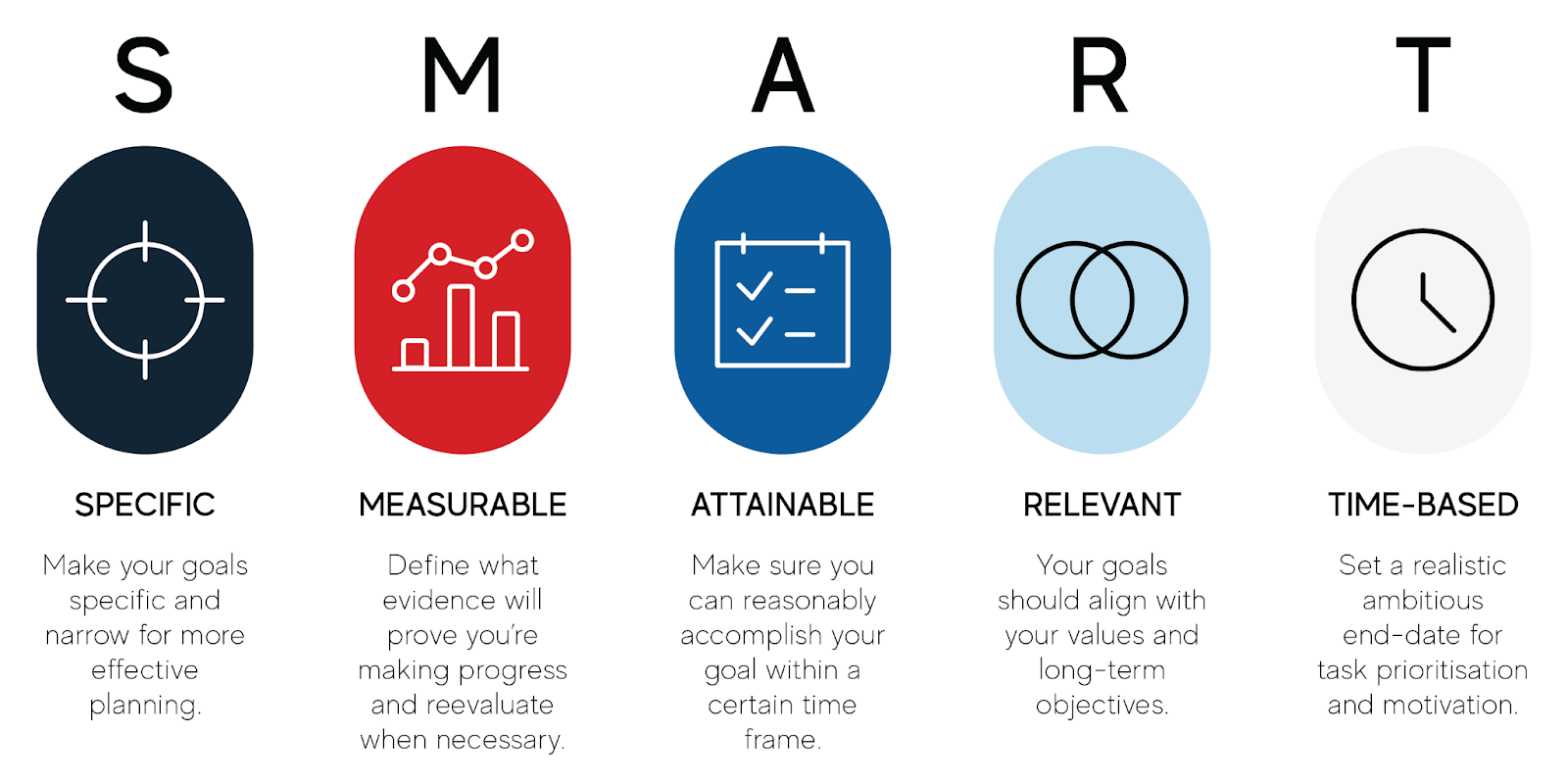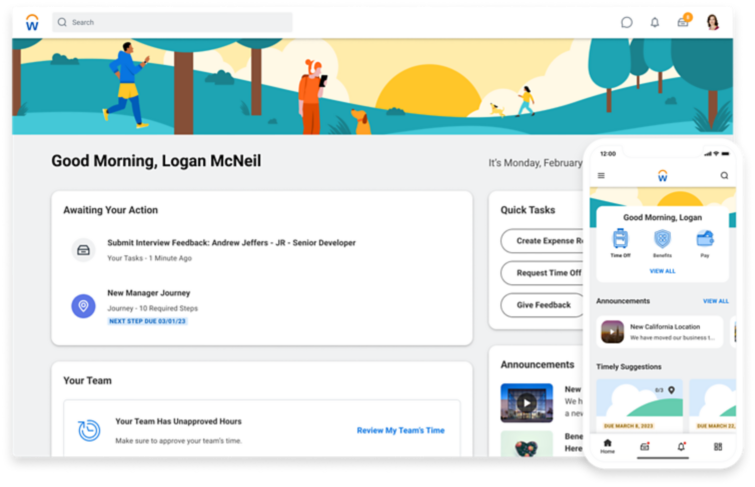How to use OKRs to Align Your Team and Achieve Your Goals

OKRs, or Objectives and Key Results, is a goal-setting framework teams and individuals use to create aspirational goals with measurable results.
It’s a methodology that asks:
“What can we improve to become more successful?” And “What can we measure to prove that that we’re hitting our objectives?”
With team OKRs, businesses can create alignment, track goal progress, and inspire employee engagement so all hands are on deck working toward a common objective.
But don’t just take our word for it.
Even all-star companies like Google, Amazon, Adobe, and LinkedIn attribute much of their success to OKRs.
Bill Gates has also spoken about the benefits of OKRs, including how they’ve helped Microsoft operate more efficiently and how they’ve improved his management style.
Curious to learn more about OKRs?
Read on to learn how to set, track, and review OKRs to improve project and business performance. We’ll also cover three of the top OKR software options we recommend and discuss how to communicate and celebrate OKRs.
Let’s take a look!
How to set OKRs
OKRs are a powerful way to align your team and achieve your goals. They help you communicate your vision, track progress, and celebrate your wins.
But how do you write effective OKRs that are clear, trackable, and relevant? One way to start is by using the SMART goals criteria: Specific, Measurable, Achievable, Relevant, and Time-bound.

For example, if you’re a software company that wants to improve your security and authentication features, you might write an objective like this:
“Increase customer retention, trust, and satisfaction by providing secure and seamless authentication options.”
This goal is specific, relevant, and achievable.
Then, you’d define key results that measure how well you’re achieving this objective, such as:
“The percentage of customers who use SAML vs. OAuth for single sign-on should reach 20% in Q3” and “We should also see reduced security incidents related to authentication by 50% in Q3”.
These key results are measurable and time-bound.
Next, you’ll need to consider what initiatives team members and managers will need to take to help you reach your quarterly objectives. These include specific projects, tasks, and action steps that can help you reach your goals.
For instance:
“Our team members will be hosting authentication webinars, crafting an in-depth email series on authentication with calls to action (CTAs) buttons, and creating a new knowledge base on authentication on our website with CTAs. These strategies should help our customers understand the importance of secure logins and encourage them to set them up.”
Finally, choose your tracking method and the tools you’ll be using to monitor progress, such as:
“We’ll be setting up alerts using an AI-powered data analytics tool called ThoughtSpot to automate the monitoring process. These reports will reveal the percentage of customers using SAML vs. OAuth for single sign-on and any security incidents related to authentication.”
TL;DR: By using SMART criteria to define your OKRs, highlighting initiatives to help you reach them, and deciding which tools and tracking methods you’ll be using, you can create meaningful and actionable goals that align your team and drive success.
How to track and review OKRs
Now that you have your goal process in order, it’s time to create company-wide systems to make sure your OKRs and tracking are embedded into daily operations.
Our advice?
Integrate your OKRs into an advanced employee experience platform so your entire team works in sync.
For instance, with an employee experience platform like Workday, managers and team members can track goal progress week after week to make sure they stay on track.
With Workday’s dashboards, employees not only have a clear list of tasks to accomplish but also gain a deeper understanding of why these tasks matter.

This “outcome-first” approach enhances employee satisfaction and motivation, nudging them to continue making a positive impact on the company’s overall success.
But to effectively implement OKRs within Workday, you might want to consider partnering with Workday consulting experts. Their expertise in OKR implementation within the Workday platform can help your company establish a seamless integration of these two elements, leading to more effective results.
You might also need to integrate goal-tracking tools that are specific to your industry.
For example, in the world of ecommerce, managing inventory efficiently is a key factor for delivering products on time and achieving business goals. An essential monitoring tool that can support this process is asset tracking.
With asset tracking, ecommerce stores can effectively monitor and manage their inventory throughout the entire supply chain, from the moment products are sourced to their final delivery.
This not only enhances inventory accuracy but also aids in preventing stockouts, optimizing reorder points, and minimizing overstock.
Add a free project management tool like Nifty to the mix, and your store can streamline inventory management processes and align each department’s goals with overall business OKRs.
This integrated approach can help track specific inventory-related OKRs, such as reducing stockouts or optimizing stock levels, and progress in real time.
Additional tools you can use to evaluate OKRs include data and feedback.
Create OKRs in under a minute.
Using Nifty
Here’s how to use data and feedback to review your OKRs:
Track key metrics
Identify the key metrics aligned with your OKRs and track them regularly. Use data analytics tools, real-time business analytics, or software to collect and analyze relevant data. See if the progress toward your OKRs is aligned with your company’s desired outcomes.
Gather employee feedback
Seek feedback from your team members regularly. Conduct surveys, hold virtual discussions, or have one-on-one conversations to understand their experience in working towards your OKRs.
This feedback can provide valuable insights into any bottlenecks or challenges that need to be addressed.
Monitor customer insights
Analyze customer feedback and satisfaction metrics to assess the impact of your OKRs on your customers. Whether you’re a freelancer, a B2B marketing agency, or a part of an in-house marketing team, monitoring your customer insights is invaluable to your marketing strategy.
Look for patterns in customer behavior and sentiment to understand if your objectives are meeting customer expectations.
Finally, don’t forget to adjust your OKRs based on changing circumstances or key learnings to ensure proper alignment.
For instance, your customer insights might reveal that Gen Zers are more interested in your new product campaign than Baby Boomers are. You might also learn that Baby Boomers don’t align with your new product at all.
In this case, you’d need to shift your sales and marketing approach (“your initiatives”) so that your copy, visuals, and core message are speaking to the Gen Z market instead. This also means you’ll need to adjust your measurable goals so that they include Gen Zers.
In other words, instead of “Increase Baby Boomer product sales by 10% in Q4,” you might shift to “Increase Gen Z product sales by 10% in Q4”.
You might also need to adjust the percentage and the deadline according to your new findings. For example, the data may show that an objective like “Boost Gen Z product sales by 15% in Q1” makes more sense for your new target audience and business goals.
Top 3 Best OKR software to try in 2023
As you can tell by now, when it comes to implementing OKRs, using the right software can help you create better team and goal alignment.
Here are three top OKR software tools to consider trying in 2023:
1. Nifty
Nifty is one of the best OKR software. It provides a user-friendly interface and helpful features like task tracking, team collaboration, and real-time progress updates.
Nifty enables you to set company-wide or team-specific goals with clear and measurable objectives.

You can also use Nifty to:
- Set clear Goals
- Create clear project roadmaps
- Automate progress reporting as tasks get completed
- Set up operational workflows
- Make beautiful docs, notes, and wikis
Best for: Aligning your project goals with your OKRs and easily monitoring and measuring progress along the way.
2. Weekdone
Weekdone is an online OKR tool designed to help organizations set and achieve their objectives and key results.

Best for: Gaining a clear understanding of how your OKRs are performing, identifying trends, and making data-informed decisions to drive your business forward.
3. Profit.co
Profit.co is an all-in-one OKR software that offers a comprehensive suite of features to manage and monitor your OKRs. It provides a centralized platform for setting goals, cascading objectives, tracking progress, and conducting regular check-ins.

Best for: Aligning your team’s efforts, fostering transparency, and driving accountability to achieve your desired outcomes.
Choosing the right OKR software depends on your specific business needs and requirements.
Consider factors such as ease of use, your specific objectives, integration capabilities, available features, and pricing to select the best tools for your organization.
How to communicate and celebrate OKRs
Communicating and celebrating your OKRs is pivotal to fostering alignment, motivation, and accountability within your organization.
Here are a few tips to help you effectively communicate and celebrate your OKRs:
1. Use clear communication
Share your OKRs with stakeholders and team members transparently. Clearly articulate the objectives, key results, and rationale behind them. Use simple, concise language to ensure easy understanding and alignment.
For instance:
“We want to tap into the French B2B market by the end of 2024. We’ve seen sales skyrocket there in our industry over the last three years, and we’d like to see the same success. Here’s a report that reviews our findings, objectives, and key results.”
2. Share regular updates
Use team meetings, email check-ins, or project management tools to share updates and keep everyone informed about OKR status and achievements.

3. Celebrate milestones
When team members reach significant milestones, celebrate them! Acknowledge their efforts and success in a tangible way. Bring it up during team meetings, send virtual high fives, and show appreciation with small rewards. 🎁
4. Promote a culture of learning and growth
Encourage individuals and teams to share their learnings and insights gained from working on OKRs. Organize knowledge-sharing sessions where team members can present their findings and share what they learned.
Sharing and discussing OKRs with stakeholders and team members offers several benefits.
Disclosing OKRs creates alignment across the organization. When everyone understands the objectives and their contribution towards them, it promotes unity of purpose and coordination.
It also fosters transparency, building trust among team members and stakeholders. It allows everyone to have visibility into the goals and progress, promoting open communication.
OKRs also provide a framework for collaboration.
By discussing OKRs, teams can identify opportunities for joint projects, shared objectives, and coordinated efforts. This collaboration also enhances creativity, innovation, and problem-solving skills so you can achieve your goals faster.
And speaking of working together …
To foster collaboration and accountability with OKRs, consider:
- Implementing cross-functional collaboration: Encourage different teams or departments to align their OKRs and explore ways to collaborate on tasks and projects
- Conducting regular check-ins: Review progress and discuss challenges at regularly scheduled team meetings
- Encouraging peer support and feedback: Motivate team members to support each other and provide positive, constructive feedback to their peers
Conclusion
And there you have it!
OKRs help businesses achieve ambitious goals. And it’s not hard to see why.
With its simple framework and focus on alignment, virtually any business or project team can apply it to achieve their objectives.
If you want to learn more about using OKRs to reach your goals, check out free resources by The OKR Institute (OKRI), an internationally recognized leader in OKR education.
And don’t forget to check out Nifty! Our user-friendly interface and helpful features can help you bring your entire team and project goals together. Try it for free today. 🎉




